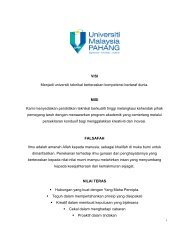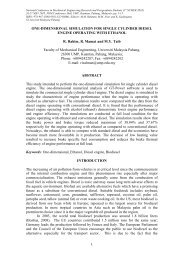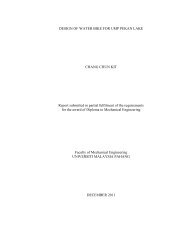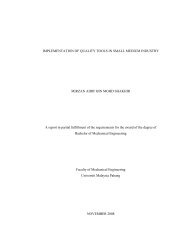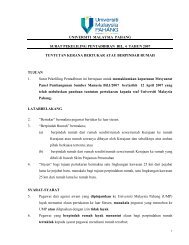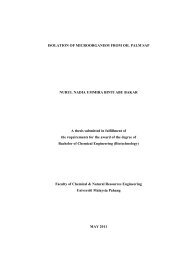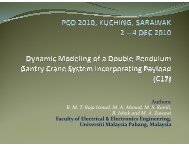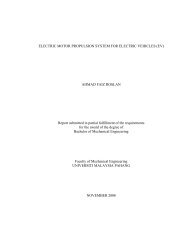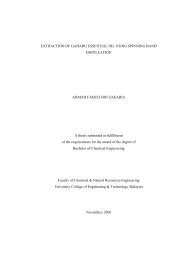crankcase analysis for two-stroke spark ignition engine ting swee
crankcase analysis for two-stroke spark ignition engine ting swee
crankcase analysis for two-stroke spark ignition engine ting swee
Create successful ePaper yourself
Turn your PDF publications into a flip-book with our unique Google optimized e-Paper software.
1CHAPTER 1INTRODUCTION1.1 INTRODUCTIONThe first <strong>two</strong>-<strong>stroke</strong> <strong>engine</strong> was invented by Sir Dugald Clerk (1900) in Englandat the end of 19 th century. The <strong>for</strong>m of <strong>engine</strong> using <strong>crankcase</strong> compression <strong>for</strong> intakeprocess, including the control of the timing and the area of the exhaust port, transfer andthe inlet ports by the piston, was patented by Joseph Day (1891) in England. Same astoday conventional <strong>two</strong> <strong>stroke</strong> cycle <strong>engine</strong>, the <strong>engine</strong> patented by Joseph Day was athree ports <strong>engine</strong>, where the intake ports used to suck air or mixture from the carburetoror air cleaner and been transfer to the combustion by the transfer port, while the thirdport is used as a exhaust port to allow burned gases exhausted to the atmospheric [10].In a conventional <strong>two</strong>-<strong>stroke</strong> internal combustion <strong>engine</strong>, the vacuum caused bya piston moving away from the <strong>crankcase</strong> draws a mixture of fuel, air and oil into the<strong>crankcase</strong> through a one-way valve of timed induction mechanism such as a piston portor rotary valve. Crankcase of <strong>two</strong>-<strong>stroke</strong> <strong>spark</strong> <strong>ignition</strong> <strong>engine</strong> is an important part sinceit acts as a compressor to compress the air-fuel mixture be<strong>for</strong>e going into cylinder[8][16].



